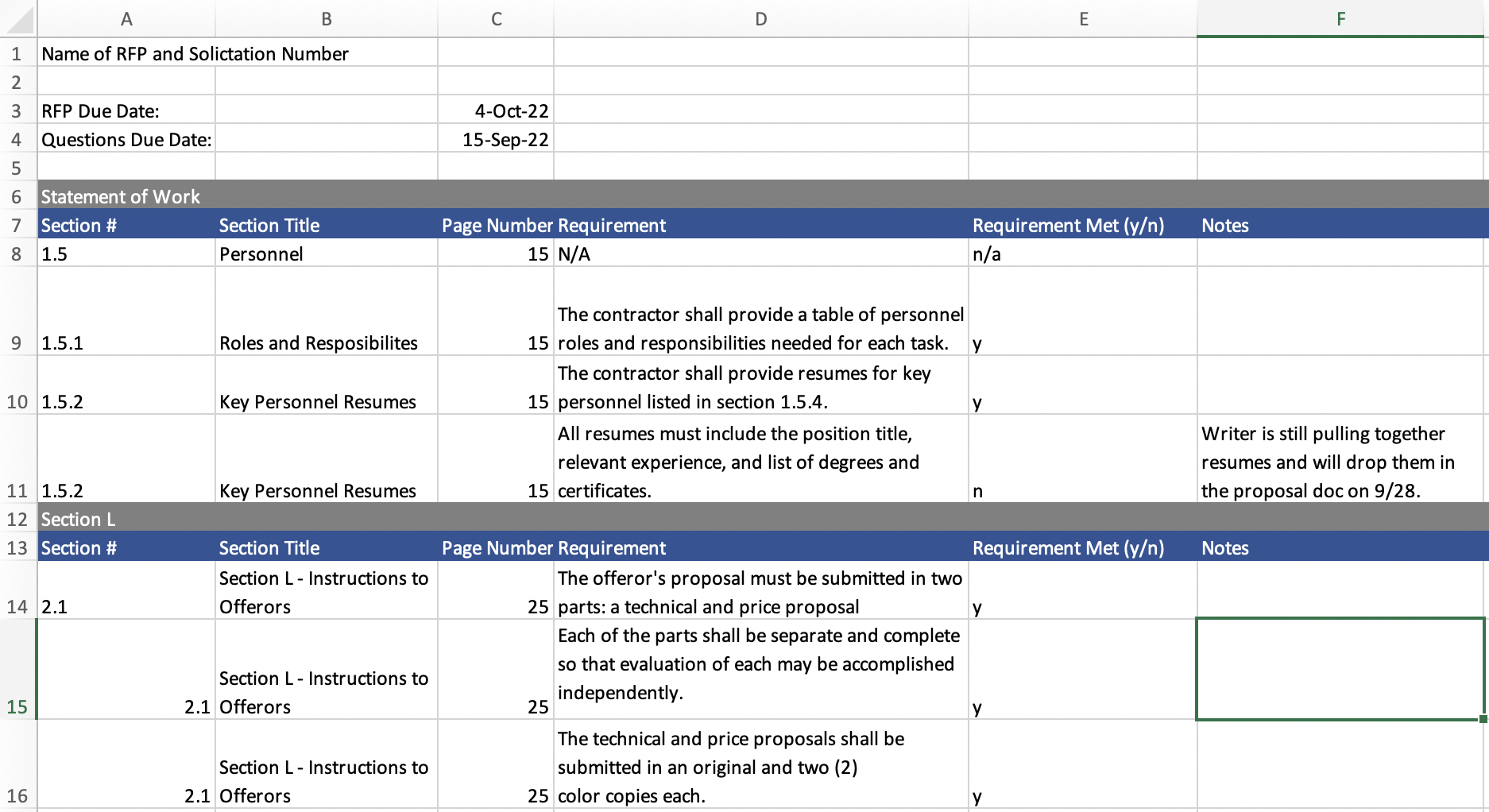The Crucial First Step for Any RFP Response
You’ve found the perfect RFP and have decided to take on the challenge of responding to it. But, reading through it and all its pages get you a little overwhelmed. Sure, there’s definitely a lot to read through but it’s one of the most important things to do before you start outlining and writing. Reviewing the entire RFP and creating a compliance (or requirements) matrix is called “shredding.” It means pulling out all the RFP requirements into a separate document, typically Word or Excel. Doing this helps ensure that you know everything that needs to be part of your response when submitted and serves as a guide throughout the proposal response period.
The Value of Shredding the RFP
Since responding to an RFP is usually a short period of time, you may think it’s best to get started writing right away. And while you should start writing as soon as possible…first you need to know all the pieces of the puzzle and lay the framework for your response. This is where shredding comes in handy.
You’ll get to fully understand all the requirements and what will need to be submitted with your proposal so you don’t miss anything. An easy way to get your proposal tossed out by an evaluator is to miss responding to something. You won’t want that to happen after all your hard work.
You’ll see all the major deadlines for submitting questions, proposal due dates, and more to assist with building out a schedule.
It creates a master doc of requirements for your entire team and keeps everyone on the same page. Without a compliance matrix, it’s easy for the proposal team to get wires crossed and become disorganized which is no fun.
Creating the Compliance (Requirements) Matrix
Although time-consuming, actually creating a compliance matrix is a simple copy and paste exercise.
Excel is the best program to develop a matrix since several columns and rows will be needed. Setting up a table in Word could also work though.
Simply copy and paste each RFP requirement into a separate row. If there are several requirements in a paragraph, it should be broken up across several rows. Be sure to keep the requirements in the same order on your matrix as they are in the RFP. Evaluators are big on being able to find requirements easily.
A requirement usually includes or starts with a must, shall, or will statement in the PWS, SOW, Section L, or Section M areas of the RFP. Examples would be 1.) The contractor must provide 10 personnel who are Subject Matter Experts (SMEs) in task area 3.1.1; 2.) The contractor will submit a weekly progress report to management; 3.) The response shall be submitted in two volumes: the Technical Proposal and the Price Proposal.
The standard columns to include are the requirement section number, section title, page number, the actual requirement, if the requirement has been met, and notes. Other columns for writers, draft due dates, differentiators, keywords, or graphics could also be included for more complex bids. At the top of the matrix, the RFP title, solicitation number, and key deadlines like the submission and questions’ due dates should be included so they are easy to find.
Example compliance matrix showing various columns for each RFP section.
Once the compliance matrix is complete, you can use it as a starting point for your response outline. The matrix will be a large doc but the point is to keep it as simple as possible. Once you have the template for a matrix, use it for each response. As you move through reviews and before final submission to the government, remember to use the matrix as a checklist so nothing is missed. All RFP requirements should be easy to find so the evaluators can see you’ve addressed them.
You could have the best solution of all the bids but if a requirement is missed then the chances of you winning the contract are over. Completeness and compliance are a big part of winning a federal contract.


